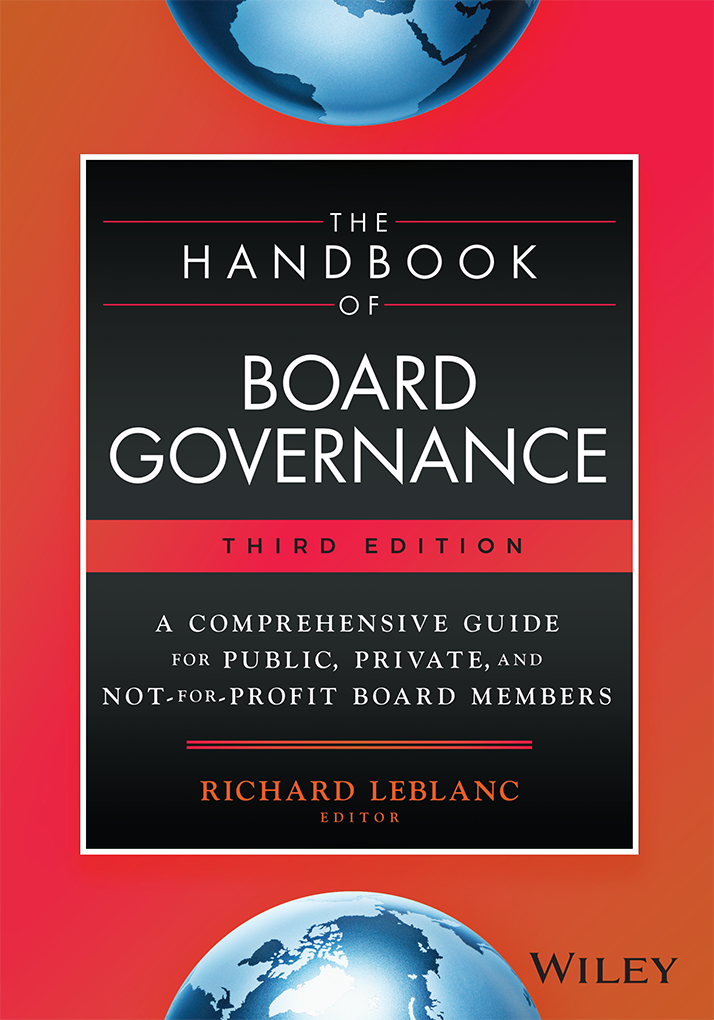There is a lot of prescriptive dogma about board leadership, from academics, rating agencies and shareholder groups, espousing a board chair separate from the CEO, even though the academic evidence is that having a separate, independent board chair does not necessarily result in a better board or even shareholder performance.
The prescription permeates into guidelines and codes for Canada, the UK, Australia, New Zealand and South Africa, where independent chairs are called for. The Americans however have largely incorporated a different approach, in the concept of a lead director.
A lead director is the independent counterpoint to a board that has a combined Chair and CEO role vested in the same person, or has an executive Chair role (e.g., a founder or major shareholder). A very good guidebook was recently released by the National Association of Corporate Directors outlining the responsibilities and important characteristics of Lead Directors. Some 2/3 of NACD members surveyed responded that they have the position of Lead Director, and 90% of respondents believed that effective Lead Directors enhance board effectiveness. I recently moderated a Lead Director panel in Dallas, Texas to discuss the report.
What matters in terms of board leadership is not whether a board of directors is led by an independent Chair or an independent Lead Director, per se, but the effectiveness of that person in that role at that time. And specifically: the leadership skills and personal attributes of the person, and the relationship with the CEO and other directors. Researchers, if they have any hope of drawing causal relations between boards and performance, should focus more on the behaviors and skills of board leaders and other directors, inside the boardroom. Companies in turn should be comfortable with designing – and defending – a leadership structure that works for them, given the individuals involved and circumstances and ownership of the company.
How can either a board chair or a lead director be ineffective? By being captured by the CEO (losing independence); by not being able to run meetings effectively (board meetings or executive sessions); by being too dominant or weak; by not understanding the industry; by not investing the time to fulfill the job description; by not ensuring proper agendas and information flow; and, most importantly, by not having the right leadership skills. Some attributes of a successful chair or lead director, other than independence of mind and leadership, include integrity, teamwork, consensus-building, constructive challenge and mentoring and development.
It is also a myth that a lead director is necessarily less effective than a non-executive chair simply because the board chair conducts board meetings and the lead director does not. A competent lead director can have a significant effect on a meeting even without chairing it. A separate board chair can be over-ridden by a dominant CEO or other directors even if that person is chairing a meeting but cannot do so effectively. Some of the least effective meetings I have observed had non-executive chairs leading them. See my recent paper (PDF) with Katharina Pick here.
Board leadership is an art. Not all – or even many – directors are cut out to lead a board. The qualities and selection of that individual – next to the selection of CEO – is probably the most important decision a board can make. Any dysfunctional board will likely have an ineffective independent board leader, whether that person is chair or lead director.
The focus should be on the skills, attributes, selection, effectiveness and assessment of the person, not the structure, or one particular model over another.
Posted by Richard Leblanc on Oct 14, 2011 at 4:48 pm in Board and Committee Leadership, Independence and Role Clarity |












